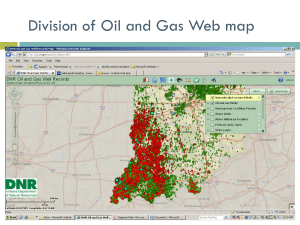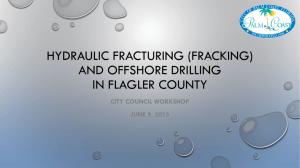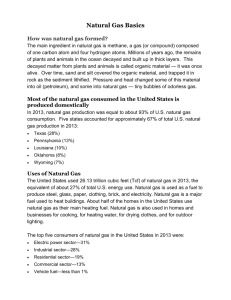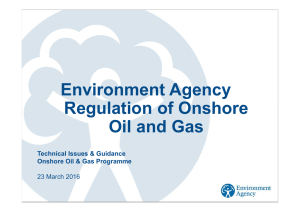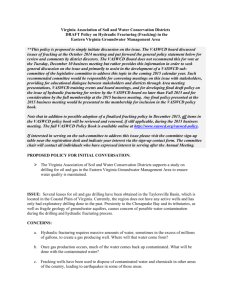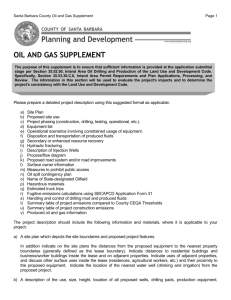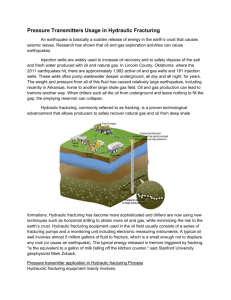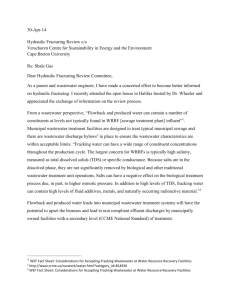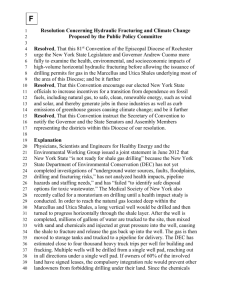Ban: Prohibits hydraulic fracturing within a municipality`s borders.
advertisement
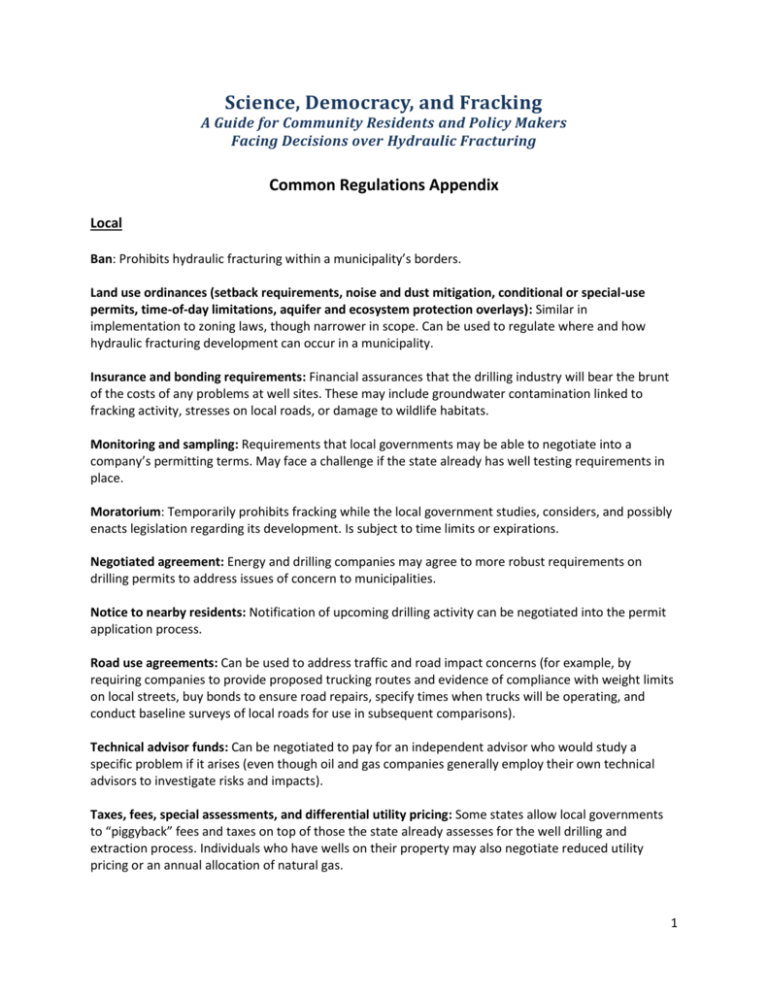
Science, Democracy, and Fracking A Guide for Community Residents and Policy Makers Facing Decisions over Hydraulic Fracturing Common Regulations Appendix Local Ban: Prohibits hydraulic fracturing within a municipality’s borders. Land use ordinances (setback requirements, noise and dust mitigation, conditional or special-use permits, time-of-day limitations, aquifer and ecosystem protection overlays): Similar in implementation to zoning laws, though narrower in scope. Can be used to regulate where and how hydraulic fracturing development can occur in a municipality. Insurance and bonding requirements: Financial assurances that the drilling industry will bear the brunt of the costs of any problems at well sites. These may include groundwater contamination linked to fracking activity, stresses on local roads, or damage to wildlife habitats. Monitoring and sampling: Requirements that local governments may be able to negotiate into a company’s permitting terms. May face a challenge if the state already has well testing requirements in place. Moratorium: Temporarily prohibits fracking while the local government studies, considers, and possibly enacts legislation regarding its development. Is subject to time limits or expirations. Negotiated agreement: Energy and drilling companies may agree to more robust requirements on drilling permits to address issues of concern to municipalities. Notice to nearby residents: Notification of upcoming drilling activity can be negotiated into the permit application process. Road use agreements: Can be used to address traffic and road impact concerns (for example, by requiring companies to provide proposed trucking routes and evidence of compliance with weight limits on local streets, buy bonds to ensure road repairs, specify times when trucks will be operating, and conduct baseline surveys of local roads for use in subsequent comparisons). Technical advisor funds: Can be negotiated to pay for an independent advisor who would study a specific problem if it arises (even though oil and gas companies generally employ their own technical advisors to investigate risks and impacts). Taxes, fees, special assessments, and differential utility pricing: Some states allow local governments to “piggyback” fees and taxes on top of those the state already assesses for the well drilling and extraction process. Individuals who have wells on their property may also negotiate reduced utility pricing or an annual allocation of natural gas. 1 Zoning laws: Can be used to restrict hydraulic fracturing activities in certain zones (such as residential areas) while allowing it in others. Have even been used to prohibit hydraulic fracturing or natural resource extraction completely in some municipalities. State Abandoned well plugging programs: Regulate the process for plugging wells that are no longer in use or are deemed irreparably damaged. May include requirements on the materials to be used and their placement, the filing of reports, and additional permits or fees. Air pollution controls: Stipulate the use of certain technologies to reduce air pollutants or set maximum allowable thresholds, and establish testing and reporting requirements. Air and water quality monitoring: Specify the types of monitoring required at the drilling site, how often testing and monitoring are to occur, the number of wells to be tested, and how results will be reported. Chemical disclosure requirements: Can include an inventory of the chemicals to be used, the base fluid used, identification and concentration of chemicals added, and rules governing the use and disclosure of “trade secret” chemicals and information. Vary widely by state. Insurance, bonding, and liability requirements: Financial assurances that a company will bear the brunt of the costs associated with any problems at its well sites. May specify the types of damage for which the company would be liable, such as groundwater contamination, stresses on local roads, or damage to wildlife habitats. Operational safety requirements: May stipulate the creation of accident prevention and recovery plans, air emissions standards and testing requirements, and rules on the storage and disposal of waste. Safety requirements can address a variety of issues, including blowout and/or spill prevention technologies or air emissions capture. Permitting and Setback requirements: Typically outline the location, design, drilling, and operation of wells as well as plans for wastewater disposal and accident mitigation. Reviewed by a state agency. Setback requirements are a specific types of permitting requirement, which regulates the distance between drilling sites and various structures such as schools, homes, water wells, and municipal water sources. Pipeline development requirements: Include the securing of rights from landowners to build the pipeline, and various building permits depending on the type of pipeline being constructed. The permitting process is complex, spanning multiple levels of government and numerous agencies within each. Environmental/ecosystem protections: Regulations overseen by numerous state agencies that may include the environmental protection agency, department of natural resources, and department of public health. 2 Taxes and fees: May include a severance tax (an excise tax on natural resources), impact fees, permitting fees, and general taxes related to oil and gas extraction. Water acquisition and use controls: Regulations that govern where water used in the fracturing process can be drawn, how much can be taken, and whether any additional fees or permits are required. Venting and flaring regulations: May specify whether excess natural gas can be vented directly or must be flared (i.e., burned off), restrict the conduct of these activities (such as the distance between flares and wells), or require notice and approval for flaring. Wastewater storage and disposal requirements: Govern the storage, treatment, transport, and disposal of wastewater. May also require the chemical testing of wastewater “flowback” and the creation of contingency plans for accidents or spills. Well integrity (cementing, casing, and tubing) requirements: Stipulate the types and composition of cement used and the length, thickness, and strength of the casing or tubing used. May also include requirements regarding the testing, inspection, and reporting of these features. 3
